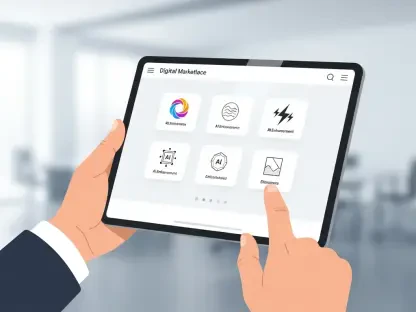What happens when a child’s playful babble, captured by a smart device in a classroom, becomes a data point in an unsecured database? This chilling thought underscores a pressing issue in today’s digital age, where speech technology is increasingly woven into the fabric of education and daily life. As children interact with AI-driven tools for learning and play, the risk of their personal information being exposed looms large. The stakes are high—protecting young voices isn’t merely a technical challenge but a moral imperative that demands innovative solutions and urgent action.
The significance of this issue cannot be overstated. With speech recognition systems becoming commonplace in schools for language development and early intervention, the potential misuse of sensitive data poses a real threat to children’s safety. This feature delves into cutting-edge research and technology designed to safeguard young users while enhancing educational outcomes. By exploring privacy-focused advancements in Automatic Speech Recognition (ASR), the narrative reveals how science and ethics can converge to create a safer digital world for the most vulnerable.
Why Children’s Privacy in Speech Tech Matters
The rapid integration of speech technology into children’s lives—from smart toys to classroom aids—has opened up new avenues for learning, but it also raises critical concerns. A child’s voice, often recorded for educational purposes, carries unique identifiers that could be exploited if not properly protected. The consequences of data breaches in such contexts are far-reaching, potentially leading to identity theft or unauthorized profiling, making privacy a paramount issue for parents and educators alike.
Beyond the immediate risks, there’s a broader societal impact to consider. Children, especially those under eight, are at a formative stage where trust in technology is shaped by early experiences. If their interactions with digital tools are marred by privacy violations, it could erode confidence in these systems, hindering the adoption of beneficial innovations. Addressing this challenge now ensures that technology remains a positive force in their development rather than a source of vulnerability.
The Unique Challenges of Child Speech Recognition
Unlike adults, children speak with evolving patterns, marked by inconsistent pronunciation and limited grammatical structure, which standard ASR systems struggle to interpret. Most existing models are trained on adult data, resulting in poor accuracy when applied to younger voices. This gap not only limits the effectiveness of educational tools but also delays critical interventions for speech and language disorders in early childhood.
The growing reliance on AI in classrooms amplifies the urgency of this issue. With digital platforms increasingly used for personalized learning, the demand for systems that can accurately understand and respond to children’s speech has surged. Parents and educators alike express concern over whether these tools can deliver on their promise while maintaining safety, highlighting the need for tailored solutions that address both functionality and security in equal measure.
This challenge is compounded by the dynamic environments in which children speak—think noisy preschools or bustling homes. Capturing clear audio data under such conditions requires specialized approaches, pushing researchers to rethink how speech tech can be adapted. The intersection of technical limitations and real-world application sets the stage for groundbreaking advancements specifically designed for young users.
Breakthroughs in Privacy-Centric Speech Tech for Kids
At the forefront of this effort, researchers from the University of Texas at Dallas, in collaboration with the Texas Advanced Computing Center, are redefining how speech recognition works for children. Utilizing the immense power of the Lonestar6 supercomputer, they’ve developed child-specific ASR models that achieve remarkable accuracy with just 40 million parameters, a stark contrast to the over 428 million required by traditional systems. This efficiency marks a significant leap forward in making the technology accessible and scalable.
A key innovation lies in the use of “discrete speech units,” a method that transforms audio into mathematical abstractions, stripping away identifiable traits. This approach ensures that even if data is intercepted, the original voice cannot be reconstructed, offering a robust shield against privacy breaches. Such advancements are not just theoretical—they’ve been tested in real-world settings like preschools, where devices like LENA record speech in noisy environments, proving the adaptability of these solutions.
The impact of these developments extends into practical applications, particularly in early education. By integrating this tech into tools that support language learning, educators can now monitor progress without compromising student safety. This balance of utility and protection showcases how innovation can address longstanding concerns, paving the way for broader adoption in diverse learning spaces.
Voices of Trust: Expert Perspectives and Real Impact
Driving this mission is Professor John H.L. Hansen, whose leadership has shaped a vision for ethical AI in child-focused contexts. Alongside Ph.D. student Satwik Dutta, who emphasizes creating “a safe digital future for all children,” the team’s commitment to trustworthiness resonates deeply. Their insights, drawn from years of research, underline the importance of aligning technological progress with moral responsibility, ensuring that every advancement prioritizes user well-being.
Real stories bring this work to life, such as the National Science Foundation-funded “Measuring Interactions in Classrooms” project. In this initiative, discreet recording devices embedded in custom T-shirts capture authentic child speech without intrusion, offering a glimpse into natural interactions. These anecdotes reveal how non-invasive methods can yield valuable data for language studies while respecting personal boundaries, building confidence among stakeholders.
The human element in these efforts cannot be overlooked. When a preschool teacher witnesses a struggling student receive timely support thanks to accurate speech analysis, the tangible benefits of privacy-focused tech become clear. Such outcomes reinforce the credibility of the research and highlight its potential to transform lives, making trust a cornerstone of its continued development.
Actionable Strategies for Privacy-First Speech Tech Adoption
For schools, parents, and developers looking to embrace this technology, practical steps can ensure that children’s data remains secure. One effective measure is adopting discrete speech units in all recording systems, as this method anonymizes audio from the outset. By embedding such features into educational tools, institutions can minimize risks while still leveraging the benefits of speech analysis for personalized learning plans.
Another approach involves on-device processing, using compact hardware like the Raspberry Pi 5 to transcribe speech locally and discard raw audio immediately after. This eliminates the need to store sensitive data on external servers, reducing exposure to potential breaches. Developers are encouraged to prioritize such edge solutions, making privacy a default setting rather than an afterthought in product design.
Finally, establishing clear ethical guidelines for AI deployment in child-centric spaces is essential. Stakeholders should advocate for policies that mandate transparency in data handling and require parental consent for any recordings. By creating a framework that balances innovation with protection, the education sector can harness speech tech to support early interventions while safeguarding young users, ensuring that every step forward is a responsible one.
Reflecting on a Safer Digital Legacy
Looking back, the journey to protect children through privacy-focused speech technology revealed a profound intersection of innovation and ethics. Researchers tackled the daunting challenges of child speech recognition with ingenuity, crafting solutions that prioritized safety without sacrificing effectiveness. Their efforts, grounded in real-world applications, demonstrated that technology could indeed serve as a trusted ally in education.
The path forward hinges on collective action from educators, policymakers, and tech developers to integrate these advancements into everyday tools. Scaling up the use of anonymized data methods and on-device processing offers a blueprint for safeguarding young voices across diverse settings. As society continues to navigate the digital landscape, embedding these principles ensures that future generations inherit a world where learning and privacy coexist harmoniously.









